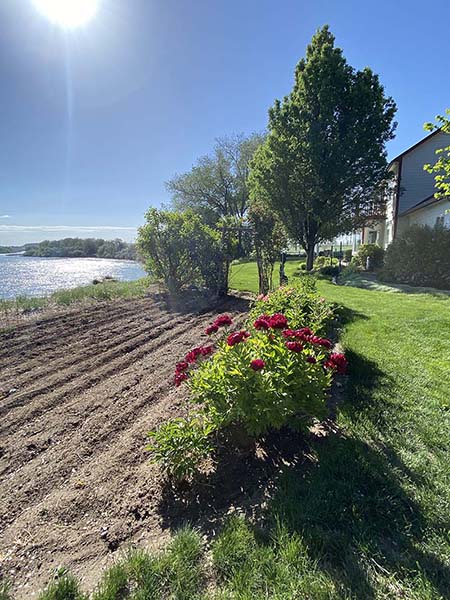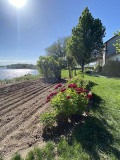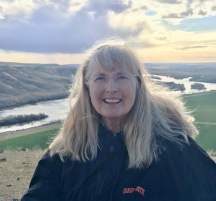No products in the cart.
Back to the Hoe

It’s All about Timing
By Diana Hooley
It’s time to plant the garden and put the “hoe” back in Idaho. Each spring I buy little packets of vegetable and flower seeds to begin the chore of gardening. Did I say chore? It’s true, I’ve become a reluctant gardener—but I’m still an enthusiastic eater. And there’s nothing tastier than homegrown fruits and vegetables. Once, when I was much younger and less reluctant, it took me a whole day to pick and pod ten pints of peas.
“Ten pints? That’s what you got for all that work?” My neighbor Mavis shook her head at me. “You realize you can buy a big bag of frozen peas at the store for very little money.”
“Those store peas taste cheap, too,” I sneered. “Store peas taste worse than cardboard. They’re mealier than construction paper. It’s Big Ag’s fault. Big Ag sends out harvesters to pick peas when they’re too green.”
I might have been young and idealistic but I had a good point. If you personally tend a garden, you can pick your produce at the optimal time, retaining the most flavor and nutrition. Gardening is all about timing, both planting and harvesting. According to Purdue University, fresh corn loses a whopping fifty percent of its sweetness within twelve hours of picking. Two to three days after harvest, most fruits and vegetables have lost about a third of their nutritional value.
The author's garden by the Snake River. Diana Hooley.

It makes sense then, to locate your garden as close to your house as possible, not only to tend it better but also for convenience’s sake. You’ll utilize your garden more if you’re within a few steps of it and can easily grab a handful of string beans to put into the stir fry you’re making for supper tonight. I read a historical account of an Elmore County homesteader who wore a path from her back door to her garden picking fresh vegetables daily. She always took a shovel with her to snap the heads off rattlesnakes lurking in the sagebrush.
Several years ago, the rain was coming down in sheets when I ran to my garden to get some fresh spinach for a salad. Later, I heard on the nightly news that radioactive fallout from the Chernobyl disaster was detected in the precipitation moving across Idaho. Gardening is not usually so hazardous to your health, though it is hard work. It’s yoga on steroids, requiring a great deal of squatting, bending, and stretching. Sometimes all this physical exertion can take a toll, which is why this spring I’ve become a reluctant gardener.
“What? My shoulder’s pinched?” I asked the physical therapist.
“No, impinged—your shoulder’s impinged,” he said. “You may have to skip the gardening this year.”
Those were fighting words—and I would have grabbed my P.T.’s shirt and impinged him, but I couldn’t raise my arm above my waist. Now, eight therapy sessions later, I’m happy to report I have no trouble lifting my wheelbarrow full of compost. It’s a good thing too, because in our lean, mean, alkaline soil west of the Rockies, gardens generally need lots of compost.
The wind has finally died down and the sun is out. It’s “go” time—time to go plant seeds in the neat rows I’ve cut with the tiller. I fan seed packets in my hand like a deck of cards full of aces. Where shall I plant what? I’m going to try a couple of new 2023 varieties this spring: a romaine lettuce that matures earlier called Teton, and Redfish bell peppers, which have larger, meatier heads. Of course, I’ll also sow old seed favorites, too: Straight Eight cucumbers and Early Girl tomatoes. The garden is bare and brown now, but soon, in just three months, it will be full of color: orange pumpkins, green zucchini, and tall yellow sunflowers.
This content is available for purchase. Please select from available options.
Register & Purchase Purchase Only
Register & Purchase Purchase Only


